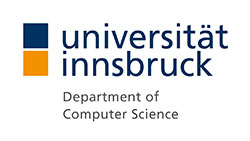Research is the core task of STI Innsbruck. Our motto is "Enabling Semantics". Find out more about our current research directions!
Archive
Conceptual Models for Services (CMS) The mission of the Conceptual Models for Services Working Group (CMS WG) is to continue the efforts of the WSMO working group in two ways. Firstly, the group will maintain WSMO adding updates as appropriate to fulfill requests from Semantic Web Service researchers and practitioners. Secondly, building on WSMO CMS WG will create a number of new generic ontologies including:
|
E-Tourism (ET)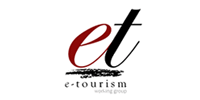 The slogan level of our mission is to revolute the traditional tourism industry to next generation eTourism powered by Semantic Web technology. It will be realized by the advanced eTourism Semantic Web portal which will connect the customers and virtual travel agents from anywhere at anytime with any needs and requests. With the several years of researches and efforts, Semantic Web becomes one of the fast booming areas recently, which catches the great attention of various communities, industries and academia. Most of related technologies have been matured enough to fly out of research labs and been taken up by the industries or the real-case applications. Various vertical Semantic Web applications have already been taken place, such as eTourism, eGovernment, eLearning, eHealth, etc. Information dissemination and exchanges are the key backbones of travel industry, which is currently mainly based on the printed brochures, posters, advertisements via television or limited web access. While Semantic Web will bring the revolution to this area by not only exponentially extending the dissemination and exchange channels with unlimited access, unlimited time and unlimited locations, but also assisting users with smart information searching, integrating, recommending and various intelligent services. Therefore, eTourism is the one of the decent application areas for Semantic Web technologies and it is also a good test-bed to prove the efficiency and utility of Semantic Web technologies. Given the strategically important position of travel industry in Austria, especially Tirol, eTourism Semantic Web portal will be the important technological break through, which will further enhance Austrian travel industry. |
Linked Open Innsbruck (LOI) The Linked Open Innsbruck working group aims at the publication of large data sets as linked data related to Innsbruck and surroundings. Moreover, the working group investigates ways to exploit and combine data in intelligent applications. |
Media Annotation Working Group (MAWG) The mission of the Media Annotations Working Group, part of the Video in the Web Activity, is to provide an ontology and API designed to facilitate cross-community data integration of information related to media objects in the Web, such as video, audio and images. |
OASIS SEE The OASIS SEE TC aims at standardize an execution environment for Semantic Web Services that can provide a platform for service oriented architectures addressing the problems of data and behavior interoperability between autonomous and heterogeneous business entities. The OASIS SEE TC will provide a reference architecture including component interfaces, semantic descriptions of the component interfaces and the components themselves, and the messaging mechanism to allow these components to communicate with each other. The OASIS SEE TC strongly recognizes the relationship of Semantic Web Services to Grid computing and aims to incorporate functionality required by Grid computing into the SEE architecture. SEE infrastructure is based on the Service Oriented Architecture (SOA) paradigm and consists of a set of loosely coupled collaborating software components acting together in an open environment. We identify SOA to become the leading software paradigm for SWS infrastructure, however, SOA will not scale without signification mechanization of service discovery, service adaptation, negotiation, service composition, service invocation, and service monitoring; as well as data, protocol, and process mediation. SEE recognizes that SOA outside of tightly controlled environment (e.g., within the firewall) cannot succeed until/unless the semantics issue is addressed. In result of work of this committee, the set of common components coordinated through Common Service Layer will be identified and abstracted by their interfaces to facilitate their usage in the SEE infrastructure. |
Ontology Management (OM WG) The mission is to create an Ontology Management suite, comprising tooling support for versioning and merging and alignment to be integrated into an ontology editing and browsing design tool. The whole infrastructure will rely on the storage support provided by an ontology repository, complemented by an interpreter for querying and on-line creation of ontologies and a repository management tool for the administration of the repository. A DDL language will be developed to easy the interaction with the repository from the different tools. The technological mission is to create an efficient and reliable ontology management suite enabling application developers to make extensive usage of Ontology technologies for enhanced information processing facilities. |
Rule Interchange Format Working Group (RIF WG) The mission of the Rule Interchange Format (RIF) Working Group is to produce W3C Recommendations for rules interchange. This Working Group is chartered to produce a core rule language plus extensions which together allow rules to be translated between rule languages and thus transferred between rule systems. The Working Group has to balance the needs of a diverse community — including Business Rules and Semantic Web users — specifying extensions for which it can articulate a consensus design and which are sufficiently motivated by use cases. |
Semantic Data Management (SemData)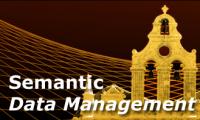 The goal of this event series is to investigate various aspects of semantic databases and data management in the large. We seek expert discussions and trans-disciplinary collaborations on issues such as semantic repositories, their virtualization and distribution, and interoperability with relational solutions, XML and others. Moreover, there is a need for advanced mechanisms to "move the logic closer to the data". Further relevant topics include the establishment of semantic data buses that bridge the gap between the data layer and the application layer, and the benchmarking of semantic data management solutions. |
Semantic Digital Libraries (SDL)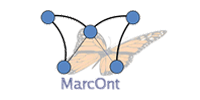 The objective of the Semantic Digital Libraries working group is to result in an bibliographic ontology and implement it in the digital library. The MarcOnt initiative requires from the bibliographic ontology compatibility with already existing bibliographic formats like e.g. MARC21, BibTeX and DublinCore The ontology will be created on the bases of collaboration and negotiations. Meanwhile the work on the digital library with semantics ( JeromeDL project) will be continued. The resulting e-Library will cover such features like semantic enabled searching, library-to-library communication (L2L), automatic service personalization. |
Semantic Technologies Manifesto (SeTeMa)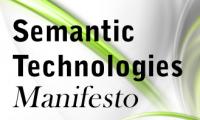 SeTeMa, the Semantic Technologies Manifesto, presents the view of the top-most researchers in the field of semantic technologies regarding the current state of the art and future trends of semantics. Several prestigious educational institutes have joined efforts with the main industrial players in order to create this manifesto that structures and unifies the current and forthcoming efforts in semantic technologies research. The document starts by presenting a comprehensive and complete description of what semantic technologies mean, and detailed information about how semantics actually work. From representation languages to service infrastructure, every aspect relevant for semantic technologies usage is presented in this manifesto. A selection of usage scenario is also presented in this document. An important part of the manifesto is dedicated to the future of semantic technologies. As attracting more interested parties is one of the keys for a successful technology transfer, the manifesto draws a plan for a master program for University education as well as a training program for industry. The manifesto concludes with the view of semantic technology experts on the future of semantics, a reflection on its evolution in the next 10 years. |
Semantic Web Portal (SWP) Mission is to create a Semantic Web Portal, demonstrating the maturity of Semantic Web technology in a real application. The technology, which will be developed together with industrial partners, during the course of the project, will be applicable to community portals for different communities. The two pillars for the portal will be the usability of the portal, both for inexperienced and expert users, and the support of communities, enabling cooperation within and between networks of people. The community support in the portal will not only be support in the passive consumption of information, but also support in the active publishing and collaboration by community members, through consensual vocabularies. Within the portal, the aim is to bring together networks of people and to facilitate collaboration between them. The use case for showcasing the Semantic Web Portal technology will be a community portal for the Semantic Web community, at www.semanticweb.org. Aim is to bring together research groups, research projects, software developers and user communities in the Semantic Web area. The technological mission is to create a satisfying ontology management environment needed for Semantic Web enabled community portals and to make extensive usage of Semantic Web technologies for enhanced information processing facilities and to create means for the Semantic inter-operation between different communities and even different Semantic Web portals. |
SWS Testbed Incubator Group The mission of the SWS Testbed Incubator Group, part of the Incubator Activity, is to develop a standard methodology for evaluating semantic web services based upon a standard set of problems and develop a public repository of such problems. The approach is to analyze the process, infrastructure, and results of the Semantic Web Services Challenge workshops. In particular, we open to establish a set of standard problems related to the use of Semantic Web Service technologies. Part of each problem description will also be a set of Web Service Interface Definitions (in WSDL). Along with the set of problems we develop a methodology for automatically verifying the messages that are exchanged in order to solve a particular problem. A reference implementation of the infrastructure can then automatically verify a problem solution by analysis of web service message exchanges. Additionally a peer review-based methodology for determining the software engineering value of the technologies used to solve the problems shall be established. |
Tourism Working Group In order to lift the work performed in the Online Communication (OC) Working Group to a practical level, STI revived the Tourism Working Group. Whereas OC deals with the challenge of scalable communication approaches in a world of exponentially growing communication channels, the goal of the Tourism Group is to bring the work in OC to business use cases within the tourism sector. |
W3C RDF Working Group (W3C RDF WG) The mission of the RDF Working Group, part of the Semantic Web Activity, is to update the 2004 version of the Resource Description Framework (RDF) Recommendation. The scope of work is to extend RDF to include some of the features that the community has identified as both desirable and important for interoperability based on experience with the 2004 version of the standard, but without having a negative effect on existing deployment efforts. |
W3C Unified Service Description Language (USDL) Incubator Group (W3C USDL IG) The mission of the Unified Service Description Language Incubator Group is to define a language for describing general and generic parts of technical and business services to allow services to become tradable and consumable. The language shall be usable for any purpose and implementation scenario of future business services on a general level, and shall also be extendable for industry-specific aspects. USDL aims at complementing the technical language stack by adding required business and operational information. To this end, industry-specific and general-purpose attributes of a service will be derived based on the requirements of use cases and target groups, in order to enable its users to model arbitrary services and to integrate with existing standards. |
Web Service Execution Environment (WSMX)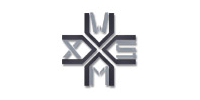 The SDK WSMX working group, part of the SDK Cluster aligns the research and development efforts in the areas of Semantic Web Services between the SEKT, DIP and Knowledge Web research projects. Members of this working group include key participants with expertise in Semantic Web-related research areas. It is the mission of the SDK WSMX working group to built up a reference implementation of an execution environment for WSMO. The goal is to provide both a testbed for WSMO and to demonstrate the viability of using WSMO as a means to achieve dynamic interoperability of web services. The development process for WSMX includes defining its conceptual model, defining the execution semantics for the environment, describing an architecture and software design and building a working implementation. The WSMX working group is open for new members. People interested in joining our initiative should provide a CV and a rational (why they want to join) to Michal Zaremba. |
Web Service Modeling Language (WSML)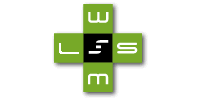 The SDK WSML working group, part of the SDK WSMO working group aligns the research and development efforts in the areas of Semantic Web Services between the SEKT, DIP and Knowledge Web research projects. Members of this working group include key participants with expertise in Semantic Web-related research areas. Members of this working group include key participants with expertise in Semantic Web-related research areas. It is the mission of the SDK WSML working group to, through alignment between key European research projects in the Semantic Web Service area, further the development of Semantic Web Services and works toward further standardization in the area of Semantic Web Service languages and to work toward a common architecture and platform for Semantic Web Services.
The WSML working group is open for new members. People interested in joining our initiative should provide a CV and a rational (why they want to join) to Dumitru Roman. |
Web Service Modeling Ontology (WSMO)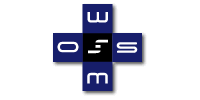 The mission is to create a Web Service Modeling Ontology, for describing services and its automation process. A world-wide standard will be provided, which will be developed together with industrial partners, research groups, and aligned with many different research projects. The pillars of the project will be the Web Service Modeling Framework (WSMF), which will provide some basic concepts that will be further developed in the course of the project, and the current available initiatives that try to address similar problems, which drawbacks will be overcome. The use case for showcasing our Web Service Modeling Ontology will be based on an eTourism application. We aim to develop an ontology that can be easily used by research groups, research projects, software developers and user communities in the Semantic Web area. |
Contact person in charge.
